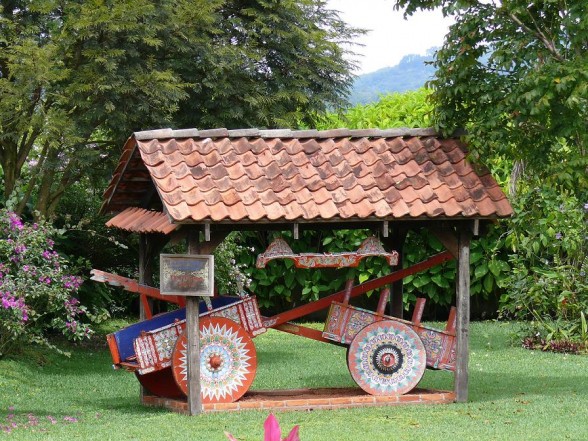
La Carreta, “The oxcart” in English, was designated National Labor Symbol on March 22nd, 1988. During the nineteenth century, with extensive coffee plantations around the country, it was necessary to have a vehicle that could actually pass through muddy places, beaches, hills, curves, rocky mountains and deep small rivers. That’s when this rustic, wooden, strong cart was created.
As the coffee industry of Costa Rica increased, so did the need to use the oxcart to produce and export the coffee beans. Thus, the first shipment of coffee to London was transported from the coffee plantations to Costa Rica’s main ports by oxcart in 1843. Oxcarts carried coffee to the province of Puntarenas on a small road between 1844 and 1846. A curious fact is that oxcarts were originally pulled by people, not oxen. However, as the need for transporting goods grew, the loads became too heavy and the people were replaced by oxen.
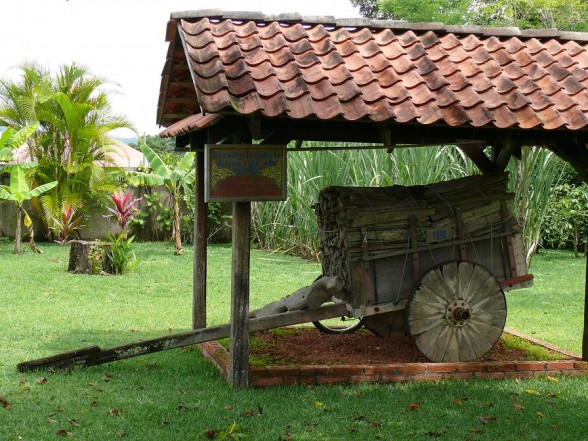
The oxcart also served as an ideal transportation for family trips and other types of social activities such as weddings and funerals, and even for medical assistance. It is interesting to know that before the railway was built, which connected San José with Puntarenas, many families used the oxcarts to spend summer days in the coast. The round trip consisted of 4 ½ days to get there, 2 days in the beach and other 4 ½ days to return!
The golden age of oxcarts is said to go from 1850 to 1935. The custom of originally decorating and painting these carts began in the early twentieth century, when cowherds decided to add life to oxcarts by hand painting them with bright colors and geometrical figures. In 1903, people decided to start enhancing the carts by decorating the circle wheels, and in 1915, the entire wheels were painted and decorated to create a distinct look among families. After World War II, the oxcart became obsolete due to new inventions; being replaced by trains, tractors and trucks. It has been used since then as an ornamental object.
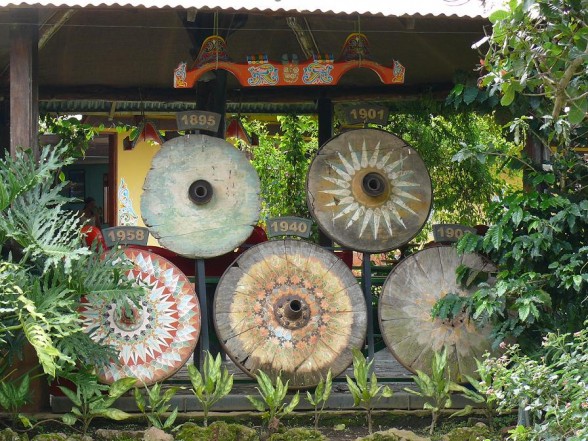
The oxcart is not only used in Costa Rica, but also in Central America. However, the Costa Rican oxcart is unique because it is the only one decorated in such an original way with colorful patterns and shapes, and even flowers, stars and animals. Although the oxcarts can present evident similarities, there are never two oxcarts painted exactly the same since all of them contain changes in color tones and figures. This art has been passed from generation to generation up to the present time.
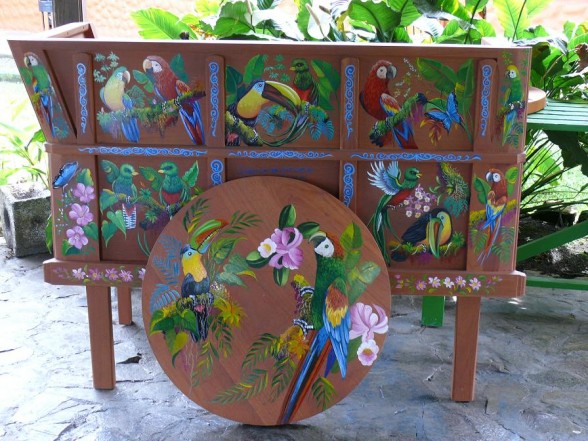
The town of Sarchí, located in the province of Alajuela, is the great traditional center for manufacturing and decorating carretas. That’s why it is common to see beautifully painted oxcarts in gardens and in the more than 200 stores, where a wonderful variety of oxcarts can be found, offering all kinds of sizes and colors. The largest and oldest oxcart factory is also found in this place: the Joaquín Chaverri Oxcart Factory was built in 1902 and is considered to be the birthplace of oxcart handicrafts in Costa Rica. In front of the church of Sarchí you can also see the world’s largest painted oxcart, which was built in 2006 in order to get the name of the town into The Guinness Book of World Records. It is an amazingly beautiful oxcart!


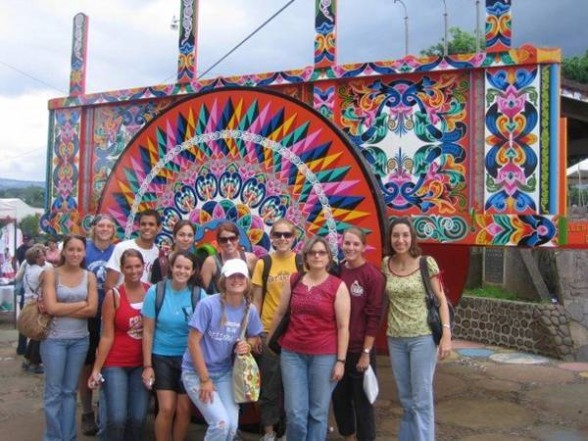
The oxcarts are nowadays used in parades and festivals around the country. The most famous one takes place on the second Sunday of every March in San Antonio de Escazú, a town in San José. The Oxcart Drivers Day, Día de los Boyeros in Spanish, has been celebrated for 30 years. This year, over 200 yuntas (sets) of oxen and beautifully decorated and colorful oxcarts participated in the event. The boyeros or oxcart men use a traditional prod or chuzo to keep the oxen moving and under control as they climb uphill to San Antonio. Besides the parade, where the priest blesses the oxcarts, the festival also offers visitors a good variety of typical food and traditional music.

After learning so much about the oxcart, it is easy to understand its importance in the Costa Rican culture. As María Alvarado says in her article about the typical oxcart, it is one of the most genuine folkloric manifestations of the country as it represents the simplicity and aspirations of rural Costa Rican people, who have become artisans thanks to it. La carreta symbolizes humility, patience, sacrifice and endurance in an effort to pursue goals in a pacific manner. The national progress is linked to the oxcart, which imposes respect in virtue of its glorious past. The typical oxcart was declared Intangible Cultural Heritage by UNESCO on November 24th, 2005.
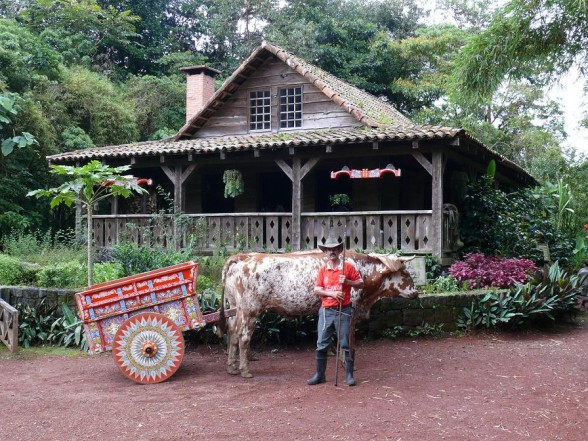
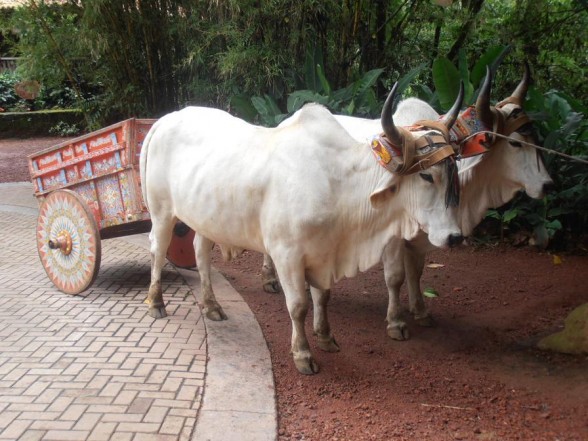
So, if you are ever in Costa Rica, don’t miss the opportunity to visit Sarchí or Escazú, get on an oxcart to take a picture or buy a miniature oxcart somewhere. It will always remind you of how the Costa Rica you know today was forged.
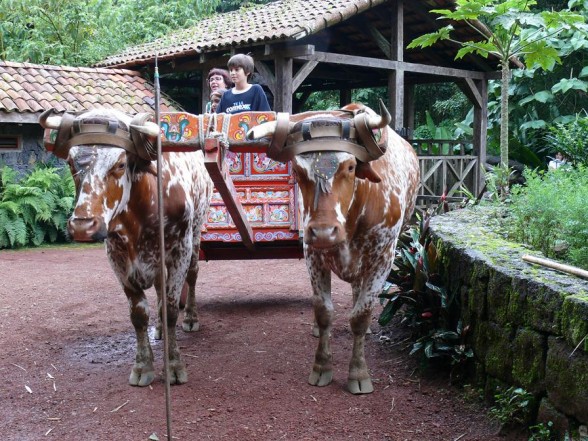
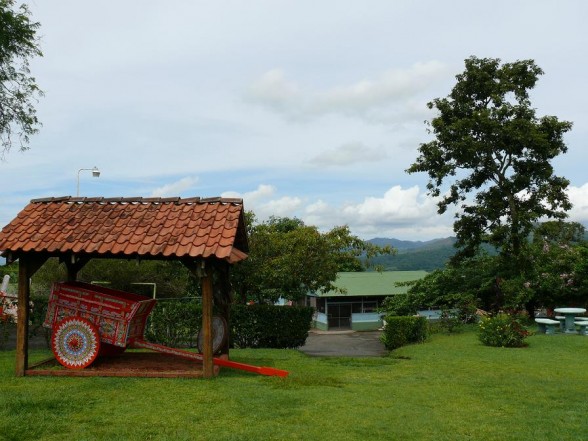
Read more
Costa Rican Annual Pilgrimage to Honor “La Negrita”

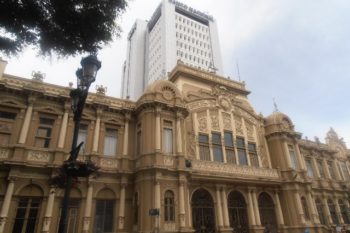



Beautiful pictures and and excellent way to talk about our oxcart. Tks Nuria
This is a very touching post since it remains me of my childhood; I grew up in a farm and the oxcart was our means of transportation and a means of gaining a wage for my Dad. We had so many kinds of oxcarts: decorated and un-decorated, simple ones, expensive ones… all kind; my dad is 79 and he still keeps an old one as a souvenir. He also has his own oxen which are very big animals but old; they are not used to pull a cart anymore. My dad used an oxcard all his life until two years ago. That was his job and he loved it. Now he is retired.
Old times were rough since it took so many hours to get places by riding an oxcart; my grandpa used to tell us stories of those trips that they took to the city for weeks.
This is indeed a fascinating article that everyone should read; thanks Nuria, for sharing. I loved it!!! Very nice pictures too!!!
wonderful article and lovely pictures especially the hand painted birds on the cart.. I always enjoy your posts, and your photos.
My next visit will have to I clued a visit to Sarchi.
Thanks a lot Damaris!! 🙂
Olguita, thanks for sharing such nice words about what oxcarts mean for you and your family! 😉 Thank you for your constant support!
Muchas gracias Janis!! 😀 I will take you to Sarchí the next time you come to Costa Rica!
Fascinating to learn the history of ox carts. We’ve seen a few in our travels southern Mexico too…
Thanks Emily! 😉
oxcart! such a touching word. Growing up in a remote countryside, Mum and I used to go farming with my uncle’s families by oxcart(cause Dad worked a part-time job in the city). My uncle’s oxcart witnessed so many lovely and unforgetable days back at that times. As a timid girl, I dared not to lead a cattle at all. However, uncle always made me to lead the cattle to a meadow when it won a break after hours of plowing(Maybe uncle didn’t know what leading a cattle means to me or he just did it jokingly). That really drove crazy. I held the other end of the rope and stayed as far as possile away the cattle. Whenever the cattle changed it’s route, I changed mine. In all, I tried my best not to offend it. In the end, things became this way:you can see a cattle actually was leading a little girl. haha
So nice this post brought back such lovely memories in your life, Luna! 😉